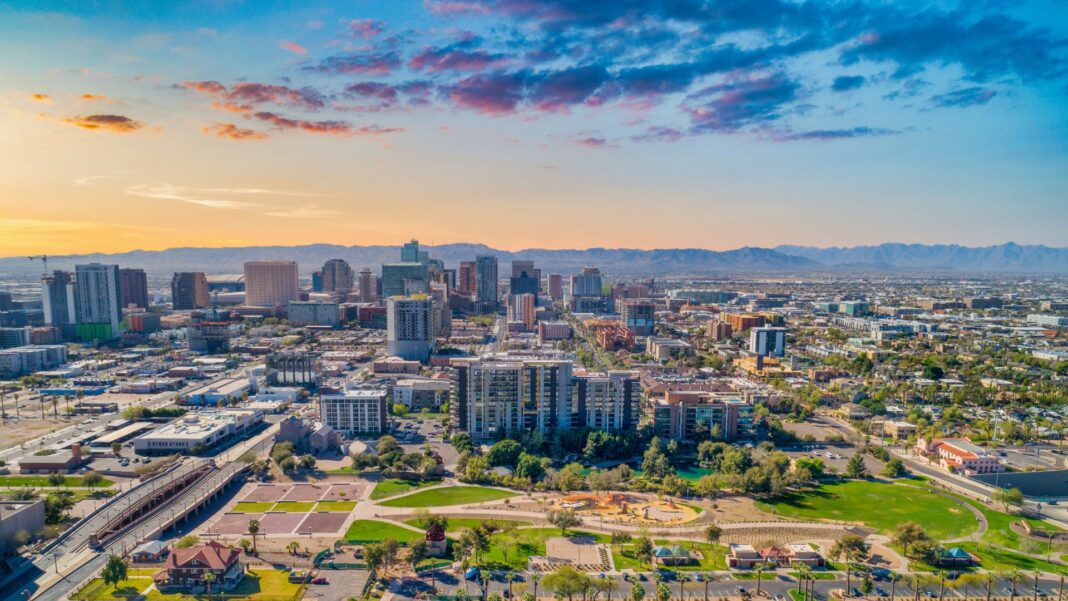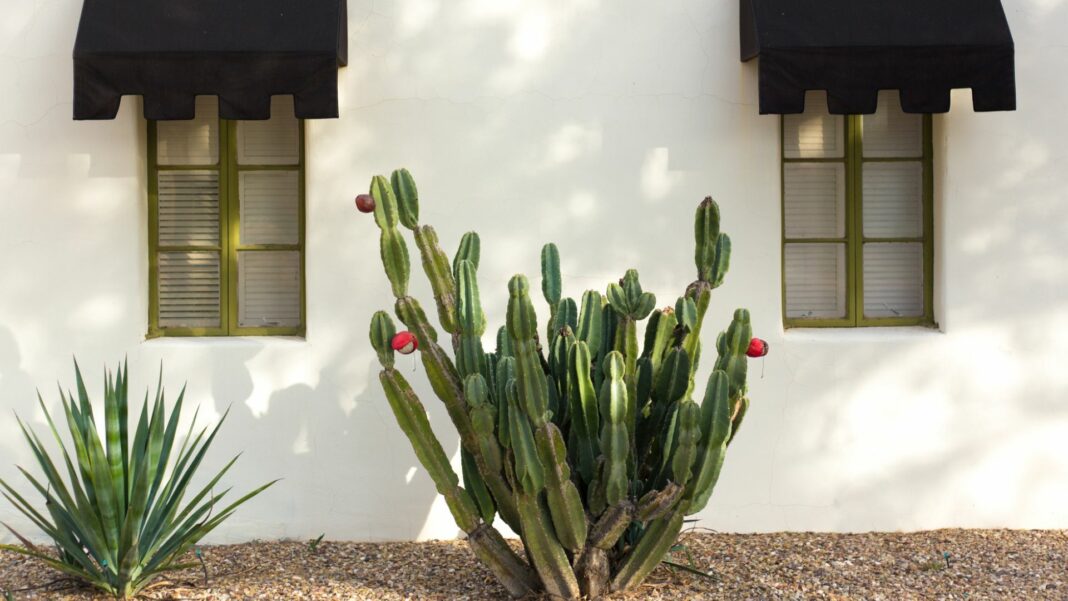When deciding to move to a new city, it’s essential to factor in the costs you may face. Understanding the ins and outs of living in Phoenix can help you decide whether it’s the right choice for you. While grocery and health care prices are below the national average, housing expenses are slightly higher, giving a higher overall cost of living in Phoenix than the national average.

What you should know about the cost of living in Phoenix:
- Rental costs
- Utilities
- Food
- Transportation
- Health care
- Fitness and entertainment
- Other expenses
Rental costs in Phoenix

Ranked the 41st most expensive city for rent in the country, your accommodation budget goes much further here than in many large metro areas in the state, including Scottsdale and Gilbert. The median monthly rent for a one-bedroom apartment in Phoenix is $1,340, while the median monthly rent for a two-bedroom apartment in Phoenix is $1,680.
The price of apartments varies substantially depending on where you want to live. For culture, art, and commerce, try downtown Phoenix. Downtown offers concerts, sporting events, and nightlife accessible by either walking or the light rail system. You’ll pay more rent for such a convenient location, though. Consider renting in more affordable neighborhoods, including the Ahwatukee Foothills, Deer Valley, or North Gateway, to save a bit of money.
Utilities
For a 915-square-foot apartment, you can expect to pay approximately $201.40 per month for your essential utilities, including water, garbage, electricity, heating, and cooling. Adding an internet package to your utilities costs about $76 more. Allow nearly $200 a month for your phone bill.
Food
The cost of food in Phoenix is very similar to other metropolitan areas across the nation. A gallon of milk costs around $3, while a loaf of bread costs about $2.80. But to make the most of life in Phoenix, try the restaurants. You should be able to buy a meal at an inexpensive restaurant like Scramble or Chino Bandido for $17 or a fast-food combo meal for $10. Joining a friend for a three-course meal at a midrange restaurant, such as Cocina Madrigal, Rusconi’s American Kitchen, or Little Miss BBQ, will be around $65.
Transportation
Phoenix’s public transportation system has buses and rails, but services are limited. Most residents rely on personal vehicles or ride-sharing. A monthly bus and light rail pass from Valley Metro is $64, with a one-way ticket just $2. The more direct, fast Express and RAPID services cost $104 for the month or $3.25 for a single fare. Taxis start around $2.23 a mile, well within the average for big cities. Other options include Uber and Lyft to get you from place to place. Despite the city’s reliance on cars, light traffic is one of the best reasons to move to Phoenix.
Health care
Phoenix’s health care is 7% lower than the national average, so you don’t need to worry about budgeting to stay well. Expect to pay around $110 for a doctor’s visit and $94 to see a dentist. Local employers usually offer health insurance coverage, so that can help lower expenses. If you’re moving with employment lined up, compare employer plans with other health care options to ensure you get the best value and coverage for your needs. If you’ve got furry family members, a vet’s visit will set you back around $51.
Fitness and entertainment

Phoenix offers year-round sun and warmth, so there are plenty of indoor and outdoor ways to keep fit and have fun. It’s always free to hike the trails of Camelback Mountain, Piestewa Peak, and South Mountain Park. If you want to join a fitness club, set aside around $33 per month. If you’re more of an armchair sportsperson, head to Chase Field. Located in downtown Phoenix, this ballpark is home to the Arizona Diamondbacks. Average tickets are $56, but you can find them as low as $19, depending on the seat, date, and opponent.
Phoenix’s museums, including the Musical Instrument Museum, Heard Museum, and Phoenix Art Museum, make for a culturally-enriching day. Single tickets are usually around $20 for adults. Expect discounts for children, older adults, and museum members. Going to the movies costs about $24 for two tickets, not including the popcorn, while a beer at a local brewery should set you back at approximately $6.
Other expenses to consider
State, county, and city sales taxes add 8.6% to purchases made in Phoenix, so make sure you budget for that amount at the checkouts. However, Arizona is an excellent place for retirees because it doesn’t tax any Social Security benefits. If you’re enjoying your golden years or looking for a place to put down roots, it’s worth considering this money-saving perk. Arizona income tax ranges from 2.59% to 4.5%, depending on your income. The more you make, the higher tax you pay.
There are more costs if you have children or plan on having them soon. Child care in Phoenix is nearly $16 an hour. If you want your child to attend an international primary school, it will cost you $16,200 per year, which is more affordable than in many other cities.
FAQ: Cost of living in Phoenix
Review the following information related to more aspects of the cost of living in Phoenix:
In Phoenix, the average household income is $60,914, which is around $4,000 less than the national average, according to the U.S. Census Bureau. However, Phoenix has better than average predicted future job growth at 48.2% for the next 10 years, compared to the U.S. average of 33.5%. Nearly 20% of Arizona corporations have headquarters in Phoenix, which boosts local opportunity. There’s a significant demand for workers in construction, health care and social assistance, information technology, and finance and insurance.
Phoenix and Scottsdale are just 13 miles apart, so many people compare these two large cities when planning their relocation. However, despite their proximity, Scottsdale is nearly 31% more expensive than living in Phoenix. The high rents in Scottsdale, ranked the 14th most expensive city for rent in the country, contribute largely to this gulf. Utilities and health costs are very similar between the cities. Transportation is one area where Scottsdale comes out on top. It costs approximately 7.4% less to get around the West’s Most Western Town.
Living in Tucson is 11.7% cheaper than living in Phoenix, so it could be a great option to enjoy a desirable lifestyle on a budget. Tucson is the 77th most expensive city in the country for rentals, with a median price of just $1,000 for a one-bedroom. Health care and transportation are also much more costly in Phoenix. Residents of both cities can expect to pay similar prices for groceries and utility bills.
When you’re ready to move to Phoenix, Arizona, and enjoy the city with the most days of sunshine anywhere in the country, check out listings on Zumper to find your new pad. There’s a reason Phoenix attracted more new residents than any other metro area in 2021. It’s time for you to find out why.



